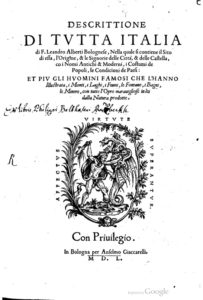
Jérôme Richard is not a well-known figure today, but his book (Description historique et critique de l’Italie) allows us to glean that he was a learned man, greatly interested in providing in-depth knowledge about Italy. Almost like a handbook on Italy, the book discusses both ancient and modern Italy while giving practical information such as the route from France. Richard even includes the chronology of the Roman emperors to provide exact historical information in volume 1, and volume 3 begins with a chronology of the different painting schools of Italy. At the Camposanto, it seems that Buffalmacco’s “Triumph of Death” impressed him most. He describes in detail the three coffins and the three noblemen looking at the coffins. The effect of the holy earth on corpses is not stated, as is the case with many other travel accounts from the early and mid-eighteenth century. / DJ
Description_historique_et_critique_de_l (excerpt)
Source: Jérôme Richard, Description Historique Et Critique De L’italie, Ou Nouveaux Mémoires Sur L”Etat Actuel De Son Gouvernement, Des Sciences, Des Arts, Du Commerce, De La Population Et De L’histoire Naturelle, 5 vols. (Dijon/Paris: Desventes-Lambert, 1766), 3:261-262.
Transcription
Translation

